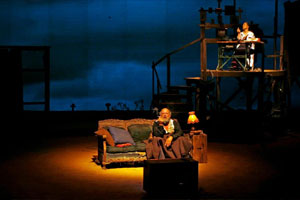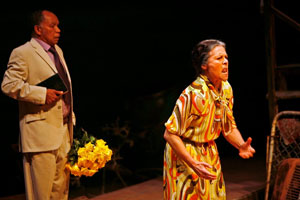Trending
Elections 2024
Jobs
- Event Promoter Hazyview
- Event Promoter Nelspruit
- Event Promoter Hazyview
- Independent Media Sales Contractors All Areas
- Experiential Marketing Creative Director-Copywriting/Strategy/Ideation Joahnnesburg
- Marketing Manager Cape Town
- Personal Assistant to the Directors Cape Town
- Freelance social media writers Johannesburg
- Delegate Sales Executive Pretoria
Doodsnikke Dystopia
And then he continued to proclaim it dead. The wave broke and rolled back. It was 1971. The American dream - replaced by disillusionment, disappointment and world factors - has become a driving force, something to work towards, it seems. And if its death was proclaimed by Thompson, it was best described by Sam Shepard's Buried Child in 1978. Winning him the Pulitzer Prize and launching him to fame in 1979.


We've often been described as Little America, but what is the South African dream? Where can we start finding it? Enter Doodsnikke: a modern South African Afrikaans take on Buried Child. You might or might not know, but when a play or work is done elsewhere again, the director is only allowed to change dialect and different actors.
An Afrikaans copy?
So is Doodsnikke merely an Afrikaans mimic of the original? Yes, and definitely no. Sheppard's ingenious ideas are highlighted in the sense that Doodsnikke takes it further in a uniquely, perhaps coincidental, South African manner that transcends time and place - that seems to be nowhere else as applicable as it does to us, here and now. Insomuch, the men and women running the Fleur Du Cap awards need to start taking notes.
Directed by Janice Honeyman and translated by Saartjie Botha, the story is set on a farmhouse in the post-apartheid Northern Cape. And despite the obvious connotations, the play is not a discourse that picks on poor old pathetic Afrikaners, or an attempt that stabs around the concept of the possibility of a South African dream.
Rather, it highlights our dysfunctional mythology, psychology and modus operandi with regards to everything. And herein lays the magic: throughout watching Doodsnikke one's mind wanders and travels, trying to make sense of the characters and their surrounding ideology. The story creates a platform that allows for images and imagination to pass constantly through the audience using surrealism and symbolism, but keeps them comfortable within the trapping of realism.


What can be described by academics as a "metanarrative" and the true genius of the original, but is by no stretch of the imagination, one that is newly found, previously not foreseen by Sheppard. Buried Child, in a South African context, outlives Sheppard and itself.
A fantasy of lies
Gys de Villiers makes a convincing Dodge, much like the original - the father figure who has become the melodramatic alcoholic. And the same can be said of Anna-Mart van der Merwe, whose Hannie is as vexing and cringing old lady as Shepard's '78 Halie.
Together they've spend their lives hiding a secret, so intense that their reality becomes a fantasy of lies, where no one is villain or hero; instead a situation you could imagine being yours had your fate been similar. More than this, I find difficult to describe. Sheppard leaves everything open ended and it's up to individual to decide - something that might take you weeks from now, which makes for interesting academic or barroom conversation.
Doodsnikke is a tragic, humourous work that combines several pressing common issues that dictate our lives publicly and personally - and does so oh so very simply, leaving one dumbfounded and impressed beyond the norm; something that would take a genius in the perfect time and place to summarise fully, like Hunter or Sheppard himself, but one that even the idiot among us can understand.
Doodsnikke runs at the Baxter Theatre (Flipside) until 5 May, 2012.
www.baxter.co.za
Photography by Mark Wessels www.markwesselsphoto.com














